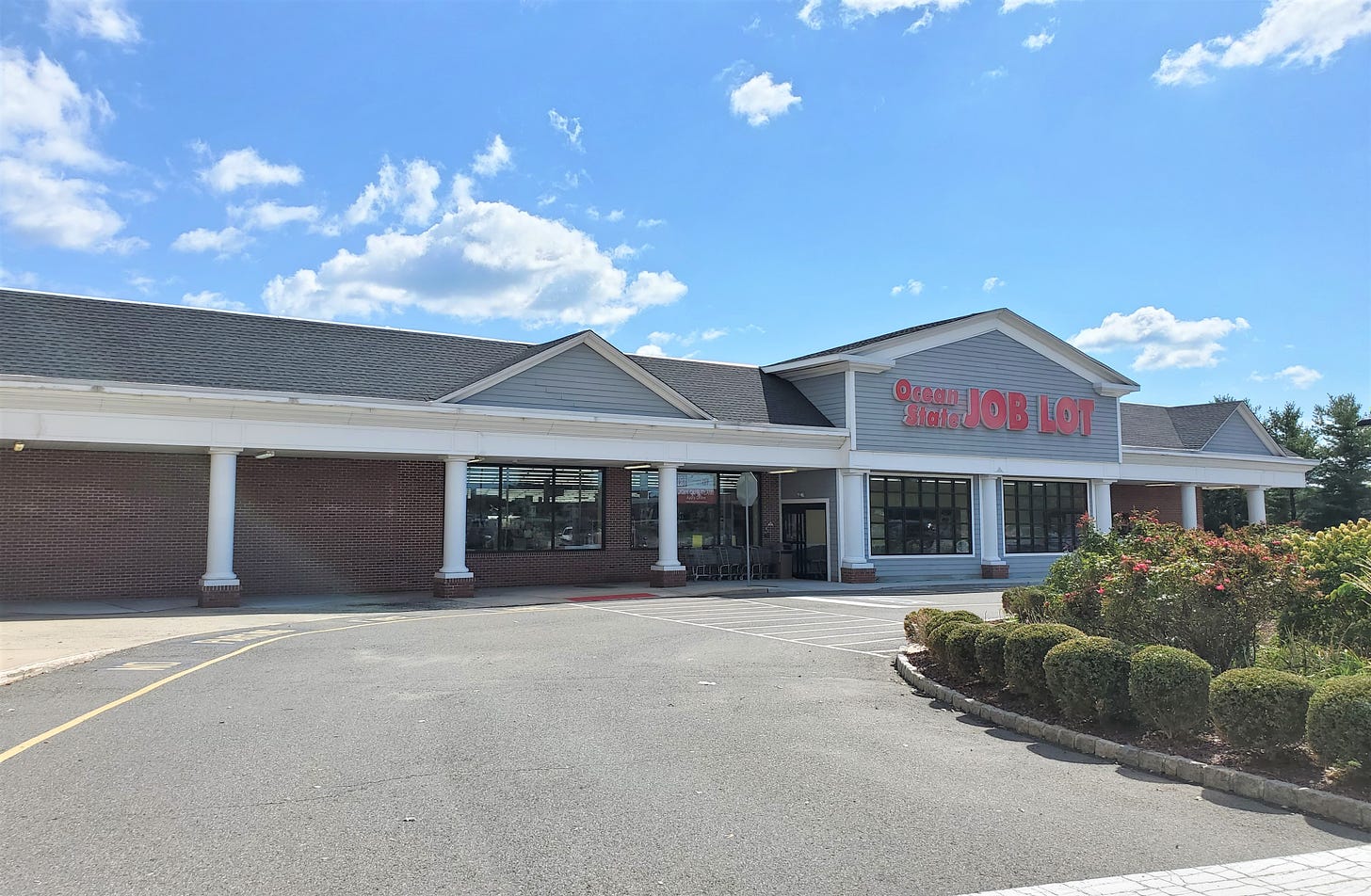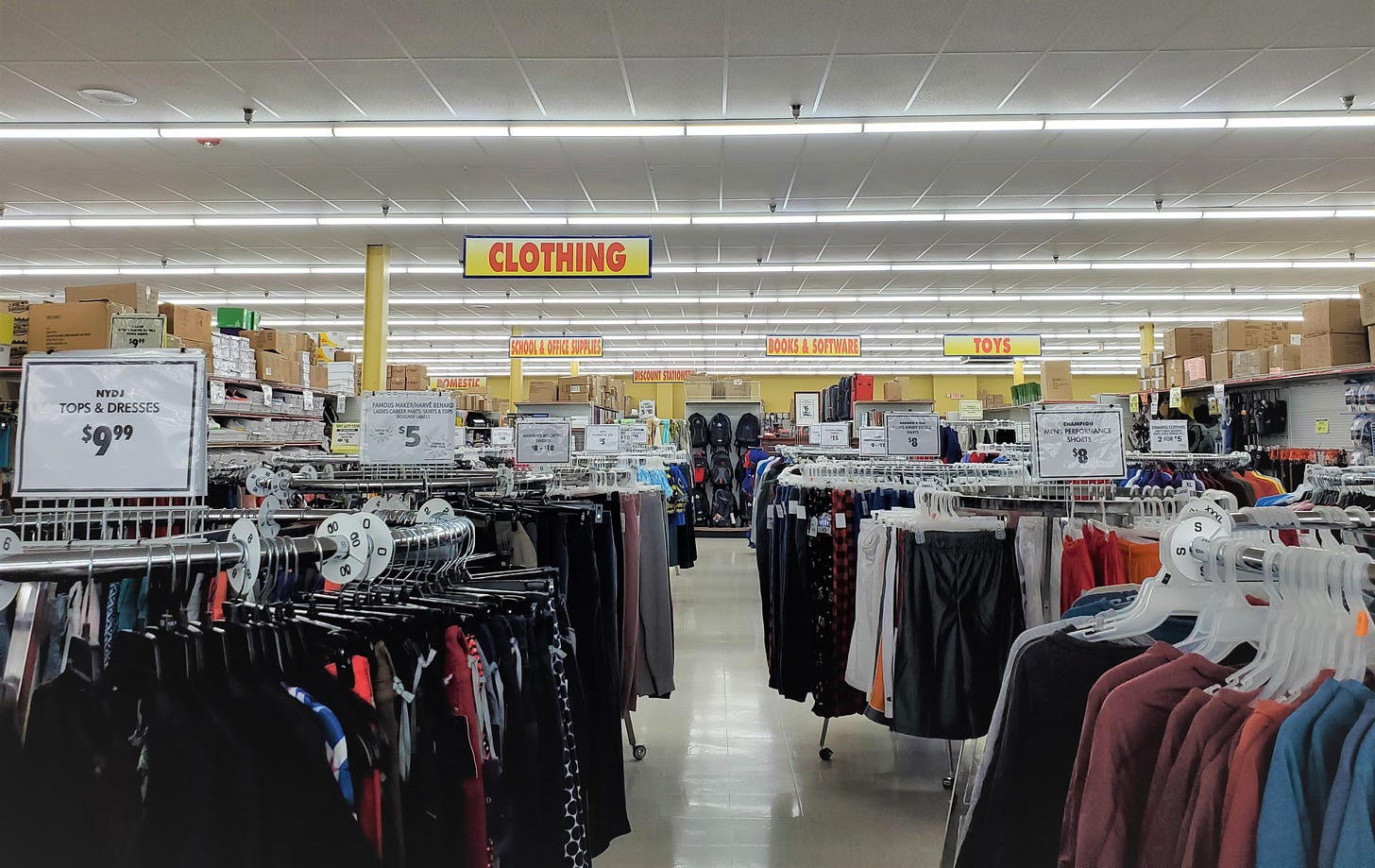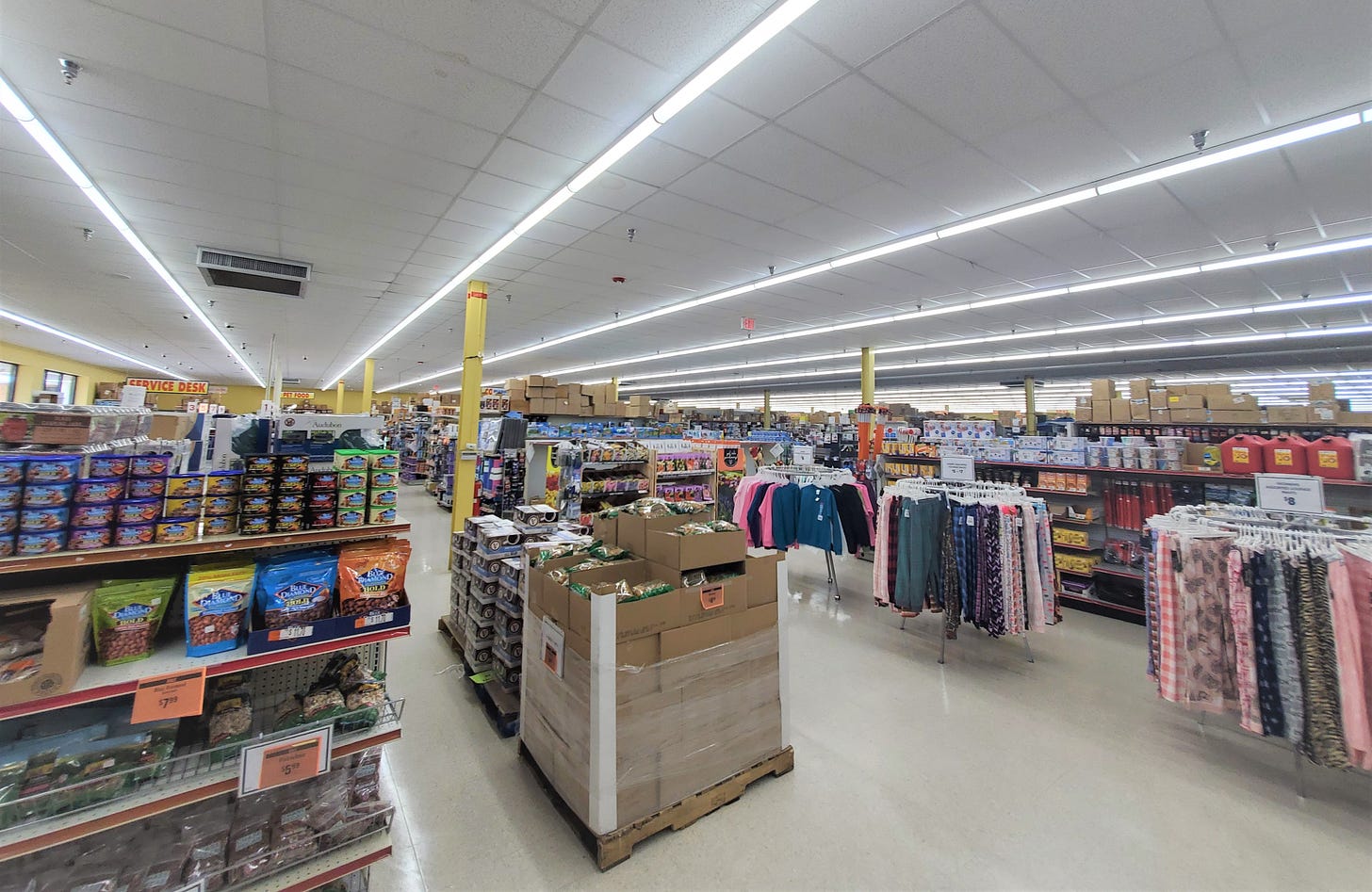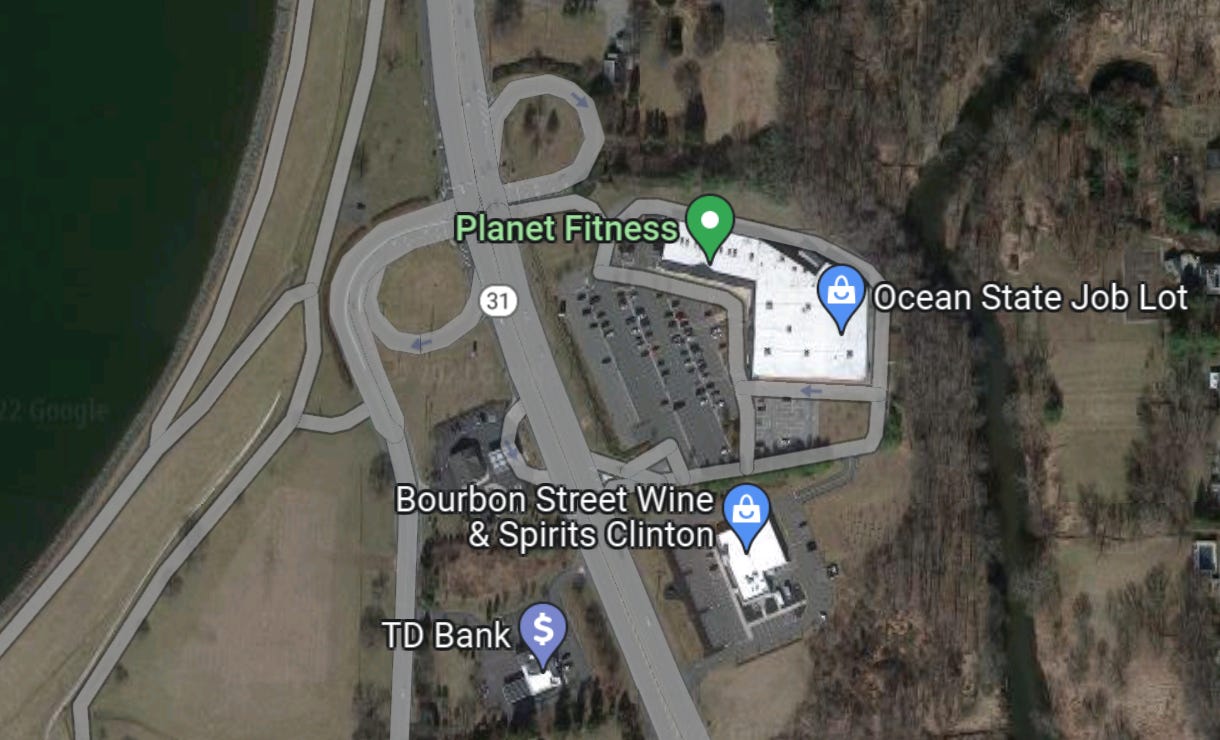I’ve been meaning to stop by and photograph this extremely ordinary commercial property in Clinton, New Jersey, for my last few trips back up there. In September I finally did.
You will probably wonder why this would interest me (or, if you’ve been reading this newsletter for awhile, maybe you won’t!)
Here’s the property:
The right-hand storefront up close:
And the left one:
A discount variety store and a gym in an old-ish low-rise building. Nothing interesting, right?
Well, look at the gym. The big floor-to-ceiling windows on the left used to be doors. There used to a Radio Shack, a nail salon, a Chinese takeout restaurant, and a pizzeria in there. (There were other doors too that have been partially bricked over). And the variety store used to be a supermarket! This was an old, relatively early neighborhood strip plaza anchored by a mid-sized grocery store.
With that retail form falling somewhat out of favor—now we have larger supermarkets, and larger concentrations of stores in one place—the tenants in here are slightly non-standard. It’s a really interesting shift.
In fact, this is barely even a neighborhood strip plaza. It was an interesting pattern: a discount store or a supermarket and one, two, or three small stores—usually a dry cleaners, a salon, and/or a pizza or Chinese takeout joint—in a single structure. It’s almost too small to even consider a strip plaza. I can think of a whole bunch of them not far from where I grew up in New Jersey. I wonder if this was a New Jersey thing, or if it was everywhere? (Here’s another one, anchored by a former A&P supermarket which is now a different supermarket.)
The one I’m writing about today, the current Ocean State Job Lot, was a Shop-Rite supermarket. Today pretty much all Shop-Rites are larger. Here’s the interior of the store.
You can see the space is very medium-sized. Most supermarkets today are either what the industry calls “small-format”—around 10,000 square feet, and very simple and compact—or the much larger typical supermarket somewhere around 40,000 square feet (Harris Teeter, Giant, Kroger, a larger Safeway, etc.)
When I was little, this was the supermarket my mother used to take me to. They moved many years ago and this property sat empty; without its anchor, the other little businesses closed one by one. If I remember correctly, the Radio Shack was the last survivor, and closed with the chain. After that many years empty, I assumed it would be torn down. It was neat to see it reborn as something slightly different.
But other than changing retail patterns, another thing might have squeezed its old businesses out. This is the view of the road from the parking lot:
You can’t quite tell how bad it is, so here’s the satellite view:
The shopping center is sort of separated from the highway, and it took me several minutes to figure out how to get in. Without any particularly interesting stores in there, you’d quickly learn to just avoid trying to get there. From a planning perspective, there’s probably no real reason for retail to be here at all, or for all that road space to be there.
There’s a broader point here too: this is car infrastructure. It’s built for cars and cars only. And yet it’s dismal to drive around here. I’ve seen the point made that infrastructure designed for the safety or convenience of walking or biking makes those activities more enjoyable, whereas infrastructure designed for motorists doesn’t really improve the experience of driving.
That might be a very deep point.
Related Reading:
Thank you for reading! Please consider upgrading to a paid subscription to help support this newsletter. You’ll get a weekly subscribers-only post, plus full access to the archive: over 400 posts and growing. And you’ll help ensure more material like this!













Reminds me of a similar refit of an old A&P supermarket in Scarsdale, NY, which is now a (quite nice) 24 Hour Fitness: https://www.google.com/maps/@40.9992997,-73.8156547,3a,75y,136.66h,90.66t/data=!3m7!1e1!3m5!1sFWfkLTJEwharw2YvvqDbBA!2e0!5s20071001T000000!7i16384!8i8192
I grew up near a strip shopping center with a supermarket about the size you describe, a pharmacy, insurance office, barber shop, dime store (T.G.&Y., an Oklahoma chain), dry cleaners, liquor store, and laundromat. The year after we moved in, OTASCO (Oklahoma Tire & Supply Co.) built a store alongside the supermarket, about the same size as the supermarket. They sold tires, auto parts, bicycles, small appliances, sporting goods, and toys. They built shopping centers of this sort adjacent to new subdivisions built in the 1950s and 1960s, typically one at every junction of section-line roads.